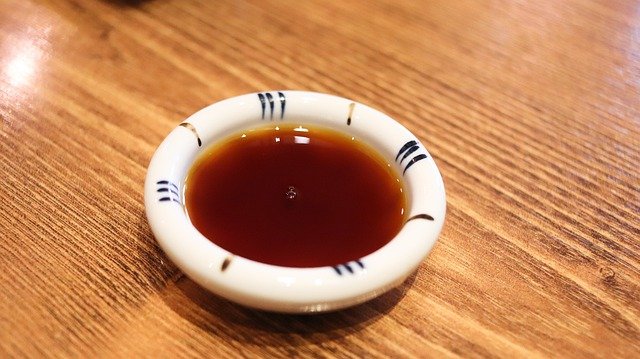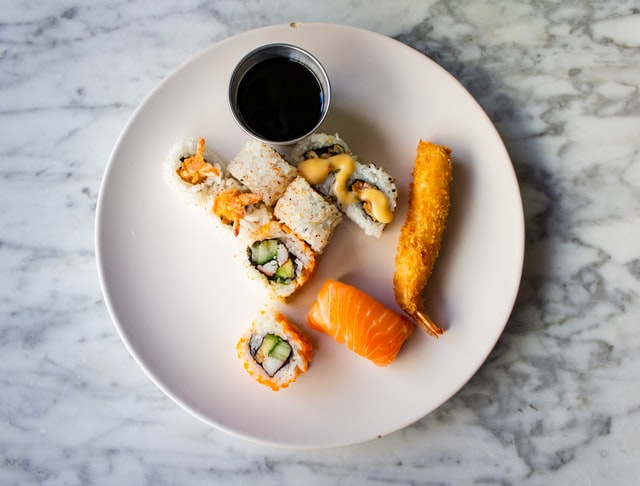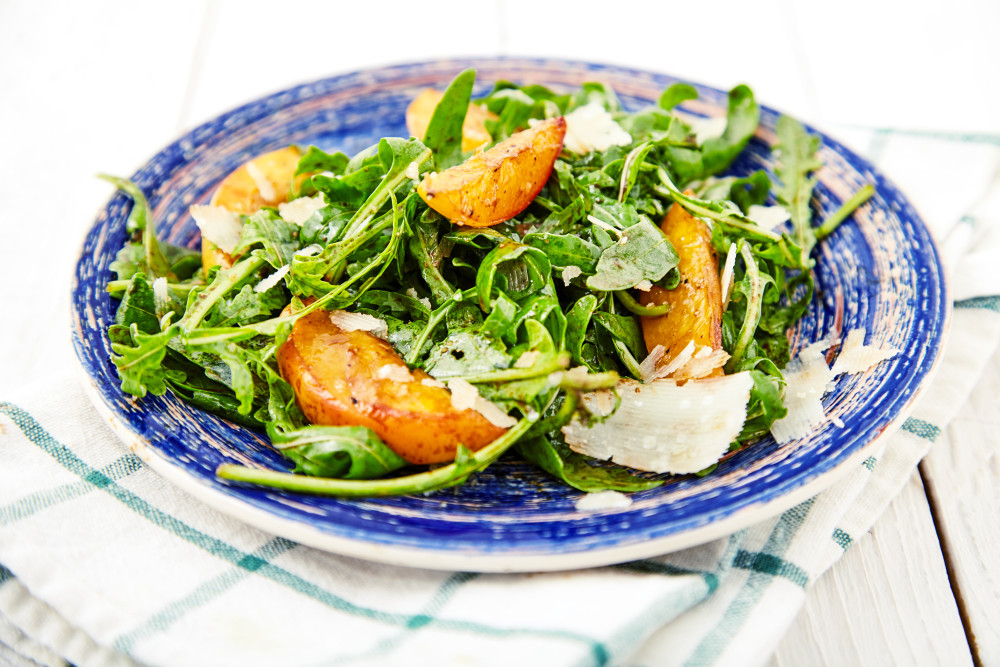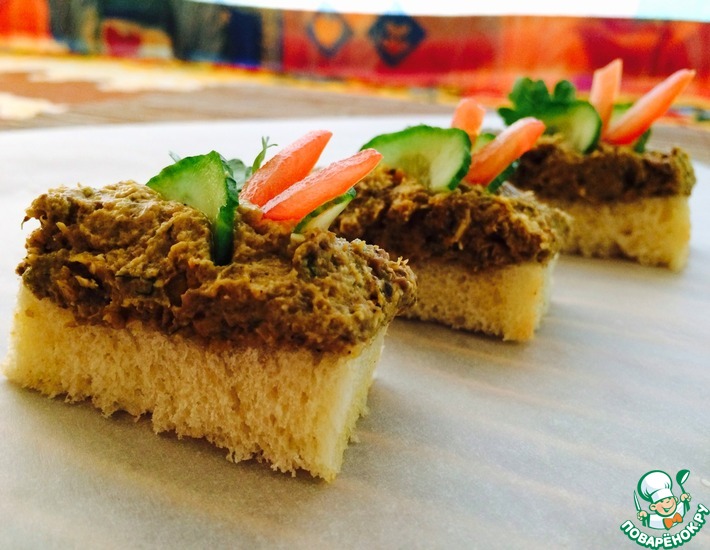History of Appearance and Distribution of Soy Sauce
Soy sauce first appeared in China about 2,500 years ago. Ancient Chinese cooks boiled freshly caught fish and cheap soybeans and by fermentation (fermentation) brought them to the sauce. The reason for making this product was the religious demands of the monks. They decided to replace all dairy and meat products with soy. Over time, the monks succeeded in inventing a recipe for vegetarian cheese – one of the ingredients is soy milk. This led to the creation of soy sauce itself.
The sauce became a worthy substitute for expensive condiments. It quickly spread throughout the Asian countries. Each chef added his own accent to the recipe and his own flavoring efforts. Korea was the first to change the recipe, and then the Japanese became interested in soy. In the 18th century, Japanese cooking was actively developing. And at that time the modern recipe for soy sauce was invented.
Later, soy sauce made its way to France. King Louis XIV admired the taste of the sauce. On his recommendation, soy sauce appeared in Europe.
By the middle of the 19th century, the Chinese had established a monopoly on the market for Asian sauces. At first, soy sauce was consumed not as a liquid but as an unrefined paste. It had a transparent appearance, a salty taste, a specific smell and a brownish-chocolate color.
In Japan, the word shoyu came to be used for soybean paste, which was subjected to fermentation. “Shoyu” is the correct word in Japanese for a general term for soy sauce even today. The word moromi was often used in Japanese cuisine to refer to this early pasty form of soy sauce. Today it is simply called “miso.
In Eastern Europe, soy sauce appeared in the mid-1990s. Dark soy sauce became the best known. It is used as an addition to prepared dishes, in marinades and as an ingredient for other sauces.

The first recipes for soy sauce were published in a book called Yesufushi in 1965.
Given that soy sauce has a long shelf life, it was exported to many European countries. The first carriers of soy sauce were sailors from Holland.
Today, several thousand different companies around the world are involved in the production of soy sauce. The largest producer of soy sauce in the world is Kikkoman. It sells more than 500 million liters of soy sauce a year.
Useful Properties and Uses of Soy Sauce
Soy sauce contains protein, vitamins (A, C, D, T, B group), mineral elements, essential amino acids, polyunsaturated fats, carbohydrates and antioxidants (their concentration is 10 times higher than in red wine). It contains no harmful cholesterol.
Useful properties of soy sauce:
- cleanses the liver of toxic substances;
- activates the growth of muscle;
- improves the elasticity of blood vessels;
- has a beneficial effect on cardiac activity;
- Prevents the development of diseases of the circulatory system;
- Restores the function of the digestive system, treats diarrhea;
- promotes weight loss;
- Relieves headaches;
- eliminates insomnia and depression;
- accelerates blood circulation;
- Charges the body with energy, gives vivacity;
- stimulates the synthesis of serotonin (happiness hormone), thus raising the mood;
- activates the nervous system (including the brain), prevents destructive changes;
- protects the body from free radicals;
- Prevents premature aging.
The maximum daily dose of soy sauce for humans is 15 ml.
Any kind of soy sauce is a salt substitute. It can be used in vegetable, meat and fish dishes to spice them up and make them taste more pronounced.
Soy sauce is often used in dishes with the main ingredient, chicken. It should be added at the final stage of cooking so that the meat does not lose its natural flavor.
Soy sauce can be served warm with beef kebab. This sauce is excellent with salmon kebabs. If you add a few teaspoons of honey to the soy sauce, it will give the fish a sweeter and more flavorful taste.

Soy sauce is served with sushi, rolls, fish cutlets, and various soups. It is a universal sauce that emphasizes the taste of any dish, as well as enriching the human body with many useful vitamins and minerals.
Contraindications to the use of soy sauce:
- individual intolerance;
- Acute gastrointestinal diseases (gastritis, pancreatitis) and chronic exacerbations;
- Early stages of pregnancy – affects the hormonal background, causing a threat of miscarriage.
- Breastfeeding (due to allergenic properties);
- Age less than three years – possible adverse effect on the functioning of the thyroid gland.
Calories and nutritional value
Soy sauce belongs to the category of low-calorie. It contains about 8 g of proteins, 4 g of carbohydrates, the fat content is about 0.5 g. Total calorie content is 50-55 kcal.
Types of Soy Sauce
The basic variety of sauces is determined by national use and the origin of the recipe. They all differ in taste, color, thickness and additives.

Commonly used types of soy sauce:
Chinese
Represents a dark brown liquid of varying degrees of thickening.
According to the technology of preparation is divided into two sub-species:
Mixed
Counts four types of sauces. In them after fermentation and filtration is introduced:
- black treacle (molasses), a byproduct in sugar production or caramel;
- juice of rare volvariella mushrooms used in Southeast Asia (mandatory for mushroom dark soy sauce);
- seasonings, flavor enhancer – glutamate, sugar, starch;
- spices, shrimp broth, Chinese vodka – baijiu (40-70%).
Boiled
The recipe contains only boiled and strained beans, grains, water and salt. A special technique is used here which makes the sauces transparent and light. The consistency is liquid, viscous or as a thick dressing. Many products made according to this recipe are widely used. For example, the best known of them is salted shenchou, and the best quality is touchou.
Japanese
Has several variations:
- Seya – wheat and soybeans are combined in equal amounts.
- Usukuchi – the liquid part is added after the rice is fermented. It is light, liquid, and has a mild flavor. Option for fish or seafood dishes.
- Koikuchi – a favorite sauce of the Japanese themselves. The most concentrated, dark, rich in flavor. Soy and wheat in the manufacture are mixed 1:1. Ideal for meat dishes.
- Tamari – in taste very similar to the Chinese, but sweeter. Light honey color, the salt content is minimal. Contains a small amount of grain. Guests sushi restaurants offer it as a gluten-free soy sauce. This allows it to be consumed by those who are allergic to soy sauce, more precisely, to the gluten in the wheat.
- Siro – has a lot of wheat in its composition and few beans. It is golden light and sweet. It darkens quickly and cannot be stored for long periods of time.
- Sishikomi is made on the basis of koikuchi. They call it a nectar sauce. Has a rich dark color.
There are also some other varieties of Japanese sauces. They have a lower salt content (up to 20-50%). As well as varieties that combine products of fermentation and protein.
Japanese varieties are subdivided by quality level (in terms of nitrogen content) into:
- extra,
- premium
- normal-standard.
Korean
Joseon ganjang — it has no grains at all. Brown-black Joseon is a condiment for Kook soup.
Indonesian
Medium sweet, sweet (with palm sugar), and salty kechap are preferred in this country. All three are based on fermentation.
Filipino
It is made on the basis of Japanese sauce and is called Toe. It includes caramel, but it is saltier and softer than the Japanese. It is consumed with tangerine (clementine).
One of the most popular types of soy sauce in China is sen soy sauce. It is made through the natural fermentation of soy beans. The recipe for Sen Soy excludes the addition of any artificial coloring or flavoring agents. The main ingredients of soy sauce Sen Soy are water, soybeans, wheat, salt and a little sugar. It is eaten with fish, meat, and vegetable dishes.
In Japanese cuisine, soy sauce for rolls. In addition to sushi sauce used in many other dishes of Japanese cuisine. Cooked it for several months. The main ingredient is beans.

Another popular type of soy sauce in Japan is yamasa soy sauce. This sauce is made up of water, soybeans, wheat, salt, and a small amount of alcohol. The fermentation process for this type of soy sauce takes about six months.
Other types of soy sauce:
Myanmar soy sauce
Made from sprouted, fermented soybeans. It is distinctive for its spiciness and antiquity of origin. It became popular in the IX-X centuries AD, and with Europeans from the XVIII century.
Malaysian (Singaporean)
This is a sweet soy sauce called Kechap. Due to an increased amount of sugars its caloric value is slightly higher than usual (300 kcal or more in 100 ml of product).
Taiwanese
Douchie contains black soybeans and wheat. The time frame in which this high-quality dressing is produced is six months.
Vietnamese soy sauce
It has the thickness of high-calorie sour cream and is used as a dip, in which it is customary to dip vegetables, chips, unleavened tortillas. All types of sauce and soybean paste have one common name: nyoktuong. In terms of popularity, it is comparable with fish sauce.
Separate must be allocated types of soy sauce, recipes for which have been compiled since our time. In this case, we will talk about Heinz soy sauce, as well as honey soy sauce. Heinz soy sauce is divided into two types: classic (for sushi and rolls) and premium (for vegetable and meat dishes). Sweet honey soy sauce is made on fire – honey is melted and garlic is added.
How to Choose Soy Sauce

- Choose certified organic soy sauce.
- GMOs and non-organic soybeans are widely used in soy sauce production in the United States. Genetically modified soybeans account for 90% of the market in the United States.
- The producing countries Japan, Korea, China or Indonesia are more reliable suppliers.
- Examine the label carefully – there should be no markers indicating an artificial or diluted product.
- The package of a quality product may have the word “fermented” on it.
- Quality soy sauce must be naturally fermented.
- Only buy soy sauce that is sold in glass bottles.
- The protein content of soy sauce should be more than 6%.
- A good product should be clear, translucent, with no sludge or floating flakes, and the liquid should not stratify.
- If the sauce is naturally fermented, sediment is completely normal and does not affect its taste.
- Do not buy fake sauce. It contains E components and chemical thickeners. The original soy sauce is made from only four or five ingredients: soybeans, wheat, sugar, salt and vinegar.
- The packaging should have expiration dates stamped on it.
- Pay attention to the cost of the product – real soy sauce can’t be very cheap.
- Soy sauce has a peculiar savory flavor – when you open the bottle and come in contact with the air it will only intensify. The taste and hue of the sauce will become more intense – a result of the oxidation process.
How do You Know if the Sauce Has Gone Bad?
- A precipitate appears on the bottom of the container with the sauce of chemical origin.
- An unpleasant odor appears.
- A change in taste.
- Formation of mold.
- Expired product.
How to Store Soy Sauce?
When storing soy sauce, the following guidelines should be followed:
- Store soy sauce on the refrigerator door in its original container.
- Always keep the bottle closed – preserving the flavor of the product for a long time.
- Do not place the product in direct sunlight.
- Soy sauce does not tolerate temperature changes.
At room temperature

Prior to opening, the product can be stored for the full shelf life that is indicated on the package.
A sealed bottle of the sauce can be stored at room temperature in a dark place. The contents may sour if the packaging is in constant contact with sunlight. A temperature of 0°C (32°F) to 25°C (77°F) is necessary.
In the refrigerator
Once opened, the bottle should be stored in the refrigerator. For a printed refill, the shelf life is 12-15 months.
- A glass bottle will keep the product longer. Even after a year, its quality will not change. Sauce in plastic packaging is better not to buy. Opened product in plastic can be stored for no more than a month.
- The lid should be tightly closed, and it should not let air or strange odors in.
- The temperature in the refrigerator should be 4 ° C (39.2 °F).
Homemade soy sauce can be stored for 5 to 6 months. It should only be kept in the refrigerator.
Prolonged storage of the product after opening the container leads to the formation of sludge. For sauce made according to traditional recipe from natural products sedimentation is normal. If you have chosen a sauce with a non-natural composition, there should be no precipitate. If there is sediment after opening such a bottle, throw the product away. The use of such sauce can lead to serious poisoning and intoxication.
Sauce obtained by natural fermentation without the addition of preservatives spoils faster after opening than chemically produced sauce. It is better to use it as soon as possible.
In the freezer
Storing the sauce in the freezer is best avoided. As it is, the sauce will be good for a year or two after it is opened, preserved in the refrigerator. And this is inconvenient – it will have to be defrosted, and the product cannot be re-frozen.
Ways to Make Soy Sauce
Soy sauce is made in these ways:
Fermentation

It contains water, wheat, soybeans, and salt. Oil is extracted from the soybeans and heat treated by boiling or steaming. Stirred with wheat, added sourdough. Heat and high humidity promotes the formation of a special mold – mycelium. A salt solution is added. Fermentation continues until it is ready. The production process takes about 1.5 to 2 years.
Fermentation can be dry and wet. It is determined by the addition of crumbly salt or saline solution. This affects the color of the sauce.
The resulting fermentation liquid is separated into solid and liquid parts. The paste is sent to feed livestock and fertilize the fields. The remaining liquid is pasteurized under high temperature and pressure, killing the active ingredients in it and stopping the fermentation. The filtered liquid is dispensed into containers and put on sale.
This is a very popular and common type of soy sauce in the United States. It is less dark, less flavorful, and more viscous.
Acidic -hydrolysis
The composition: soy, water and salt, artificial flavor enhancers, dyes, preservatives. Wheat is not used. Instead, a catalyst for chemical processes – hydrochloric acid. This leads to the formation of a strong carcinogen – chlorpropanol. It is supplemented with various synthetic food additives. In Japan such a product is considered of poor quality, its sale is impossible. The duration of production is reduced to a few days.
This method is much easier. No need to spend a lot of time. Protein breakdown by acids fits into just a few days (less than a week). The result is a product completely unlike the original, made according to the ancient rules. It remotely resembles the natural one in flavor, color and consistency.
A quick sauce may contain substances to increase its shelf life. Sauces made by the method of hydrolysis differ in taste and appearance from the natural Chinese seasoning.
The natural products include the brand names “Sen Soi”, “Bamboo Stem”, “Kikkoman”.
There are several types of Chinese seasoning:
- Light – a light, opaque brown liquid. The second name is ordinary soy sauce.
- Dark – caramel is added in the production process. The sauce becomes thick, with a slight sweet taste.
- Low-sodium – prepared chemically, without the use of bacteria or mold fungi. The composition has less salt.
- Tamari – a natural Chinese seasoning made from soybeans without mixing with other grains.
Each product has its own flavor, color and aroma.
Dissolution
Includes: natural product, water, dyes, sugar, acids, preservatives. The sauce obtained by fermentation is diluted with water in the ratio of 1:9. Other substances are mixed with it. The taste qualities of such seasonings are weak.
Preparation at Home
It is difficult to prepare a completely original product according to the classic recipe at home. After all, cooking involves the process of fermentation, which takes at least half a year. A simple and affordable recipe for making the dressing.

- Soak the soybeans in water, leave them in this state for 8-10 hours.
- Boil them for 1-2 hours until they are completely soft.
- Grind the boiled beans to a mushy consistency (in a blender or with a special pusher for potatoes).
- Dilute with meat broth (use beef broth, and for a diet product – broth from chicken breast without skin), add flour to the resulting soy puree.
- Stir the product until all lumps are broken up.
- Bring the mixture to a boil, stirring constantly over low heat (otherwise the sauce will burn and lumps will form).
- Once the product boils, simmer for a few more minutes, add salt to taste.
- For a liquid consistency, in the resulting sauce, add a little broth.
- Let the product cool. It is ready to be consumed.
If you like a spicy taste – you can add to the ingredients:
- garlic (1-2 small cloves);
- hot ground pepper;
- mayonnaise;
- onion (half a small onion). Grind to a mashed state beforehand.
The principle of cooking is the same. In the process of cooking, add additional ingredients.
Cooking Recipes Ideas with Soy Sauce
In Japan, China, and Korea, soy sauce is used in almost all dishes. It is indispensable as a base for many other gravies, sauces and soups, including the famous sauce – teriyaki. In European countries it is added to fish and meat delicacies such as steak, cutlets, chops, grilled meat, kebabs, giving them flavor and appeal. Combining the sauce with vegetables, pasta is the perfect flavor sensation. Its marinade properties – it makes meat tender and soft.
1. Broccoli with soy sauce and Asian-style ginger

This dish could be called a hot salad. Broccoli with an extraordinary dressing of soy sauce, sesame oil and lime will change your mind about this type of cabbage. The sweet yet sour flavor from the dressing will pleasantly surprise your taste buds.
2. Roasted Chinese-style cabbage

A quick and easy dish to prepare. The cabbage is juicy, soft, with a slight crunch, sweet and salty, with a citrus flavor. This kale will be your favorite snack dish or an addition to any side dish.
3. Arugula salad with caramelized peaches

A salad with a tangy dressing. Adding soy sauce to the dressing changes the taste of the entire salad. Mixing flavors of sweet, salty and sour, you will definitely like it. This easy-to-make dish will become a frequent fixture on your table.
4. Light Asian-style soup with buckwheat noodles and salmon

A Chinese dish. You can substitute buckwheat noodles for the rice or wheat Chinese noodles. Add soy sauce to flavor the broth and that will give it an extraordinary flavor and aroma.
5. Fried egg noodles with bacon Chinese style

For this interesting dish, based on two kinds of soy sauce and the addition of other ingredients, make a sweet and sour Chinese-style sauce. An uncomplicated and unusual dish for a family dinner or holiday table. Experiment with the flavors of the foods.
6. Bitted cucumbers

A dish with an interesting and equally appealing flavor. A popular dish of Chinese cuisine. It combines all the basic flavors: salty and umami – given by soy sauce, sweet, sour, bitter and spicy. Serve the cucumbers cold with hot dishes. You’re sure to surprise everyone with this simple and delicious dish.
7. Funchosas with mushrooms and vegetables

The flavor and aroma of this dish is amazing. Soy sauce and garlic perfectly complement the taste of vegetables. The mushrooms have a sweet and sour flavor. Nutritious and hearty dish.
8. Spicy fried squid

Easy, quick dish to prepare. Spicy soy sauce and hot peppers combine perfectly in this dish. A splash of taste is guaranteed. The squid is tender and soft.
9. Chicken and cashews

Chunks of crispy chicken and roasted cashews topped with a sweet and salty sauce. Serve as a side dish with rice. This dish is a great dinner option.
10. Teriyaki shrimp

Fried shrimp combined with two sauces. Unusually delicious, savory and original dish. You can use it as appetizer.
11. Sichuan chicken

Chicken with golden color and fragrant flavor. Serve it with any side dish. Very tender chicken meat – melts in your mouth. And hints of soy sauce add spice to the dish.
12. Shiny meat with lightly salted pickles

Asian dish. Spicy pork in a special marinade that covers the meat with a magical gloss. A simple recipe for cooking and maximum taste, will surprise any foodie.Cucumbers perfectly shade the juiciness and softness of the pork.
13. Zucchini and mushroom pâté ‘Yummy’

A wonderful option for an appetizer. Easy and quick to prepare a dish. It’s hard to tell from the taste that it has no meat at all. A great dish for breakfast or an option for the holiday table.
14. Millet soup with salmon and young cabbage

An excellent option to diversify the menu for lunch. Fish goes wonderfully with soy sauce and vegetables. Easy, delicious and at the same time nutritious and healthy soup. A great option to surprise the kids with a new masterpiece.
15. Grilled tofu and broccoli with peanut sauce

An extraordinarily delicious dish. Tender and healthy tofu, spicy sauce – create a fairy-tale of taste. Sprinkle sesame seeds on top to make this dish look beautiful.


